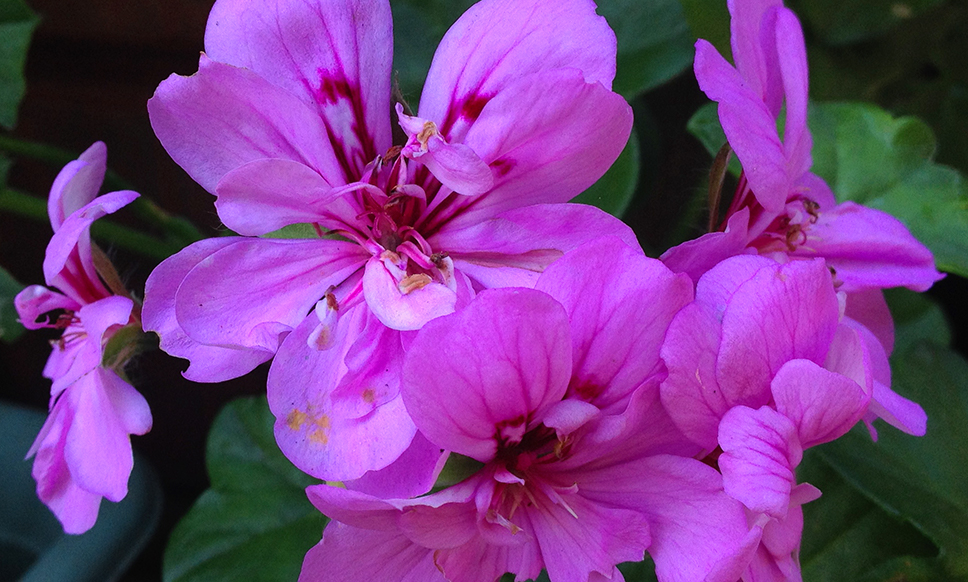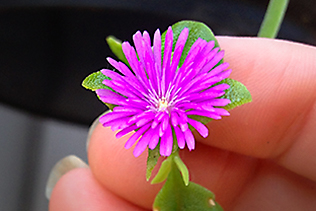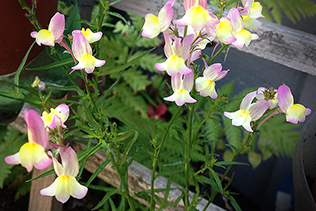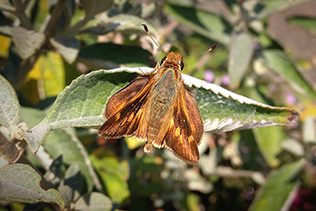
“After women, flowers are the most lovely thing God has given the world.”
– Christian Dior
9/10/17:
Some people might think I’m a gardening expert, since I’ve been writing this blog on the subject for a while, I read articles daily, and I spend so much time out among the plants. But I’m not far above the novice level, really. My knowledge is vastly outweighed by the amount that there still is to learn: not just in regard to finding the best methods of caring for my plants, but in identifying what they all are in the first place.
One that I’ve finally identified decisively since it has matured is the Aptenia Cordifolia. It’s grown long tendrils, so I figured it wanted to be a hanging plant, and it does seem happy in a bowl-shaped pot at the east/north corner of the roof. I’ve also determined that the tall tree along the fence is indeed a Ponderosa pine, and I learned this week that what I’ve been calling the “cabbage rose” is the Lilac Pink cultivar of Moss Rose, an heirloom variety popular in Victorian times.
Geraniums (pelargoniums) are such a common, easy to care for flower that I rarely give them much attention beyond watering and deadheading. But I’ve been reading about different varieties since I realized that the pale purple ones I picked near the shopping center and rooted in my garden have a more complex, semidouble bloom. I think these could be the Global Lavender or Cotta Amethyst variety.
One new mystery to research is a plant with delicate pastel flowers. I only remember planting delphiniums and columbine in the seedling pots on the trellis, and these don’t resemble either one. I’ve yet to find a good flower ID tool online, or an app that works with my phone that’s more reliable than GrowIt. So my current method is asking my followers on Twitter, or just typing phrases like “tiny pink and yellow garden flower” into Google and browsing a lot of pretty images.
One that I’ve finally identified decisively since it has matured is the Aptenia Cordifolia. It’s grown long tendrils, so I figured it wanted to be a hanging plant, and it does seem happy in a bowl-shaped pot at the east/north corner of the roof. I’ve also determined that the tall tree along the fence is indeed a Ponderosa pine, and I learned this week that what I’ve been calling the “cabbage rose” is the Lilac Pink cultivar of Moss Rose, an heirloom variety popular in Victorian times.
Geraniums (pelargoniums) are such a common, easy to care for flower that I rarely give them much attention beyond watering and deadheading. But I’ve been reading about different varieties since I realized that the pale purple ones I picked near the shopping center and rooted in my garden have a more complex, semidouble bloom. I think these could be the Global Lavender or Cotta Amethyst variety.
One new mystery to research is a plant with delicate pastel flowers. I only remember planting delphiniums and columbine in the seedling pots on the trellis, and these don’t resemble either one. I’ve yet to find a good flower ID tool online, or an app that works with my phone that’s more reliable than GrowIt. So my current method is asking my followers on Twitter, or just typing phrases like “tiny pink and yellow garden flower” into Google and browsing a lot of pretty images.
Clicking on the small images below will bring up a larger version.
I was out watering and delighting in the sunshine for hours on Sunday. From time to time, I’d pause and stay as still as possible, while looking for hints of motion in the air around my flowers. I noticed many of the little brown skipper moths fluttering about. We also get white butterflies and the occasional swallowtail or monarch. I only saw a few bees. There were a couple of yellowjackets; they're mildly interesting to look at with their bold stripes but not really welcome in the yard, so I hope they haven’t built a nest around the eaves of the roof somewhere.
Birds hanging out this summer include scrub jays, towhees, chickadees, titmice, nuthatches, juncos and hummingbirds. I am a bit better at identifying birds than plants, having been intrigued by them for a larger part of my life. We have two feeders (also frequented by squirrels) and now a birdbath. I like to think that my avian visitors are feeling welcome and apppreciated. They may be the culprits behind my bitten tomates, but there’s undamaged fruit for us humans to enjoy as well, so I don’t mind too much.
Birds hanging out this summer include scrub jays, towhees, chickadees, titmice, nuthatches, juncos and hummingbirds. I am a bit better at identifying birds than plants, having been intrigued by them for a larger part of my life. We have two feeders (also frequented by squirrels) and now a birdbath. I like to think that my avian visitors are feeling welcome and apppreciated. They may be the culprits behind my bitten tomates, but there’s undamaged fruit for us humans to enjoy as well, so I don’t mind too much.


